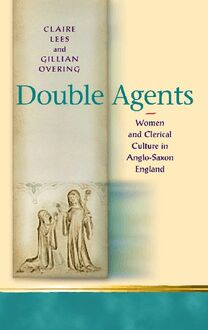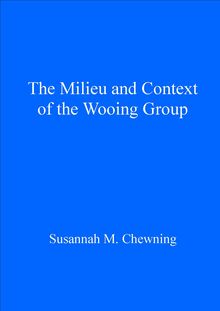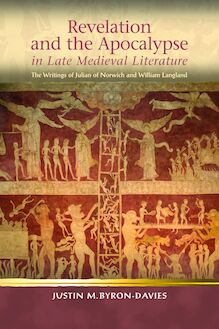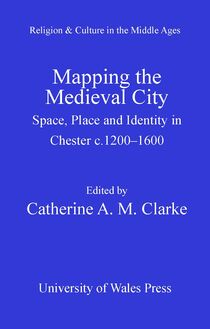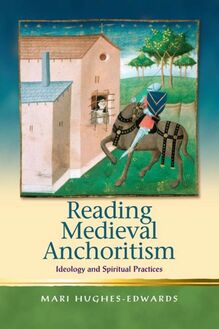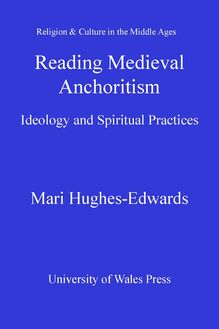-
 Univers
Univers
-
 Ebooks
Ebooks
-
 Livres audio
Livres audio
-
 Presse
Presse
-
 Podcasts
Podcasts
-
 BD
BD
-
 Documents
Documents
-
- Cours
- Révisions
- Ressources pédagogiques
- Sciences de l’éducation
- Manuels scolaires
- Langues
- Travaux de classe
- Annales de BEP
- Etudes supérieures
- Maternelle et primaire
- Fiches de lecture
- Orientation scolaire
- Méthodologie
- Corrigés de devoir
- Annales d’examens et concours
- Annales du bac
- Annales du brevet
- Rapports de stage
La lecture à portée de main
Vous pourrez modifier la taille du texte de cet ouvrage
Découvre YouScribe en t'inscrivant gratuitement
Je m'inscrisDécouvre YouScribe en t'inscrivant gratuitement
Je m'inscrisEn savoir plus
Vous pourrez modifier la taille du texte de cet ouvrage
En savoir plus

Description
Sujets
Informations
| Publié par | University of Wales Press |
| Date de parution | 15 juin 2012 |
| Nombre de lectures | 0 |
| EAN13 | 9781783165155 |
| Langue | English |
Informations légales : prix de location à la page 0,0574€. Cette information est donnée uniquement à titre indicatif conformément à la législation en vigueur.
Extrait
RELIGION AND CULTURE IN THE MIDDLE AGES
Reading Medieval Anchoritism
Series Editors Denis Renevey (University of Lausanne) Diane Watt (Aberystwyth University)
Editorial Board Miri Rubin (Queen Mary, University of London) Jean-Claude Schmitt ( cole des Hautes tudes en Sciences Sociales, Paris) Fiona Somerset (Duke University) Christiania Whitehead (University of Warwick)
RELIGION AND CULTURE IN THE MIDDLE AGES
Reading Medieval Anchoritism
IDEOLOGY AND SPIRITUAL PRACTICES
MARI HUGHES-EDWARDS
Mari Hughes-Edwards, 2012 Cover image : Manuscript illumination of Percival and the Recluse, from the Romance of Saint Graal Gianni DagliOrti/CORBIS.
All rights reserved. No part of this book may be reproduced in any material form (including photocopying or storing it in any medium by electronic means and whether or not transiently or incidentally to some other use of this publication) without the written permission of the copyright owner. Applications for the copyright owner s written permission to reproduce any part of this publication should be addressed to the University of Wales Press, 10 Columbus Walk, Brigantine Place, Cardiff CF10 4UP.
www.uwp.co.uk
British Library CIP Data A catalogue record for this book is available from the British Library.
ISBN 978-0-7083-2504-9(hardback) 978-0-7083-2505-6 (paperback) e-ISBN 978-1-7831-6515-5
The right of Mari Hughes-Edwards to be identified as author of this work has been asserted in accordance with sections 77 and 79 of the Copyright, Designs and Patents Act 1988.
C ONTENTS
Series Editors Preface
Acknowledgements
Abbreviations
Introduction
I ANCHORITIC SPIRITUALITY IN ISOLATION: THE ENGLISH ANCHORITIC GUIDES
1 Introducing the Guides
2 Anchoritic Enclosure
3 Anchoritic Solitude and Sociability
II ANCHORITIC SPIRITUALITY IN CONTEXT: ENGLISH ANCHORITISM AND THE WIDER MEDIEVAL WORLD
4 Anchoritism and Asceticism
5 Anchoritism and Contemplative Experience
Conclusion
Notes
Appendix: Guidance Text Overview
Select Bibliography
Et ad astra doloribus itur (Prudentius, Cathemerinon , 10: 92)
This book is dedicated to my parents William George and Marian Joyce Hughes-Edwards
S ERIES E DITORS P REFACE
Religion and Culture in the Middle Ages aims to explore the interface between medieval religion and culture, with as broad an understanding of those terms as possible. It puts to the forefront studies which engage with works that significantly contributed to the shaping of medieval culture. However, it also gives attention to studies dealing with works that reflect and highlight aspects of medieval culture that have been neglected in the past by scholars of the medieval disciplines. For example, devotional works and the practice they infer illuminate our understanding of the medieval subject and its culture in remarkable ways, while studies of the material space designed and inhabited by medieval subjects yield new evidence on the period and the people who shaped it and lived in it. In the larger field of religion and culture, we also want to explore further the roles played by women as authors, readers and owners of books, thereby defining them more precisely as actors in the cultural field. The series as a whole investigates the European Middle Ages, from c .500 to c .1500. Our aim is to explore medieval religion and culture with the tools belonging to such disciplines as, among others, art history, philosophy, theology, history, musicology, the history of medicine, and literature. In particular, we would like to promote interdisciplinary studies, as we believe strongly that our modern understanding of the term applies fascinatingly well to a cultural period marked by a less tight confinement and categorization of its disciplines than the modern period. However, our only criterion is academic excellence, with the belief that the use of a large diversity of critical tools and theoretical approaches enables a deeper understanding of medieval culture. We want the series to reflect this diversity, as we believe that, as a collection of outstanding contributions, it offers a more subtle representation of a period that is marked by paradoxes and contradictions and which necessarily reflects diversity and difference, however difficult it may sometimes have proved for medieval culture to accept these notions.
A CKNOWLEDGEMENTS
Loving thanks must first go to my parents, William and Joyce Hughes-Edwards, for all their support during the fourteen years I spent writing this book. My father was a deep spiritual thinker, and the first person who inspired me to seek knowledge for its own sake. My mother s strength anchored him, as it does me. Without my mother this book could not have been finished; without my father it could not have been started.
I would also like to thank my doctoral supervisors, Felicity Riddy and Jeremy Goldberg, who guided me during the research that formed the basis of some earlier sections of this book. They encouraged me, listened to me, challenged me intellectually and supported me to an extent far beyond that which could ever have been expected of them.
I am also grateful to my doctoral external examiner, Bella Millett, who has been characteristically kind and supportive of my work from my student days, and whose scholarship of medieval spirituality continues to inspire me with awe.
Robert Hasenfratz made helpful suggestions for improvements to the manuscript in its final stages, and I am grateful to him for his clear-sighted advice and for his belief in the book.
Thanks are also due to Katy Cubitt, Joseph Gribbin (now Brother Anselm), Liz Herbert McAvoy and her family, Cate Gunn, Catherine Innes-Parker, Alexandra Barratt and Eddie Jones. I am also grateful to the late Philip Stell, whose scholarship funded the original doctoral research at the Centre for Medieval Studies, University of York, on which some of this book is based, and to Edge Hill University for awarding me a research grant to support the writing s final stages.
I would also like to thank Elizabeth McConnell, Effie Knights, Rachel Nott, Kathy Powell, Hilary Arnold, Roz Ferguson, Gill Parrott and Elke Wei mann.
Last, but not least, my loving thanks go to James Binns for his unfailing encouragement, guidance and care, for giving me a quiet place to write in, and for telling me when it was time to stop: Is est amicus qui in re dubia re iuvat, ubi re est opus .
A BBREVIATIONS
This page gives the full details of the abbreviations used to denote the anchoritic guidance texts which are cited parenthetically in this monograph. Anselm Francis S. Schmitt (ed.), Sancti Anselmi Cantuariensis Archiepiscopi, Opera Omnia , 6 vols (Edinburgh: T. Nelson, 1946-63). This abbreviation refers to specific Latin letters of Anselm s, each of which is explicitly identified in a suffix to this abbreviation in each case: Letter 112 in vol. 3, pp. 244-6; Letter 230 in vol. 4, pp. 134-5 and Letter 414 in vol. 5, pp. 359-62. AW , Corpus Bella Millett (ed.), with Eric J. Dobson and Richard Dance, Ancrene Wisse. A Corrected Edition of the Text in Cambridge, Corpus Christi College, MS 402, With Variants from Other Manuscripts , vol. 1, Early English Text Society, original series, 325 (2005). DII Aelred of Rievaulx, De institutione inclusarum , in Aelredi Rievallensis Opera Omnia: I Opera Ascetica , in Corpus Christianorum Continuatio Mediaeualis I , ed. Anselm Hoste and Charles Hugh Talbot (Turnhout: Brepols, 1971), pp. 635-82. DII , MS Bodley 423 This refers to the late-medieval redaction of Aelred of Rievaulx s anchoritic guide, De institutione inclusarum , in John Ayto and Alexandra Barratt (eds), Aelred of Rievaulx s De institutione inclusarum : Two English Versions , Early English Text Society, original series, 287 (1984), pp. 1-25. Form This refers to the edition of Richard Rolle s anchoritic guide, The Form of Living in Sarah J. Ogilvie-Thompson (ed.), Richard Rolle: Prose and Verse from MS Longleat 29 and Related Manuscripts , Early English Text Society, original series, 293 (1988), pp. 3-25. Fr hlich Walter Fr hlich (ed. and trans.), The Letters of Saint Anselm of Canterbury , 3 vols (Kalamazoo: Cistercian Publications, 1990-4). This abbreviation refers to specific English translations of certain Latin letters of Anselm s, each of which is explicitly identified in a suffix to this abbreviation in each case: Letter 112 is in vol. 1, pp. 268-71; Letter 230 is in vol. 2, pp. 199-200 and Letter 414 is in vol. 3, pp. 184-7. Liber Goscelin of St Bertin, The Liber confortatorius of Goscelin of Saint Bertin , Analecta monastica , ed. Charles Hugh Talbot, series 3, Studia Anselmiana , fasc. 37 (Rome: Pontifical Institute of St Anselm, 1955), pp. 1-117. MacPherson Aelred of Rievaulx, A rule of life for a recluse , in Aelred of Rievaulx: Treatises and Pastoral Prayer , trans. Mary Paul MacPherson (Kalamazoo: Cistercian Studies Series, 1971), pp. 40-102. Millett Bella Millett, Ancrene Wisse: Guide for Anchoresses. A Translation (Exeter: Exeter University Press, 2009). Myrour Marta Powell Harley (ed.), The Myrour of Recluses (Madison and Teaneck: Fairleigh Dickinson University Press, 1995). Otter Goscelin of St Bertin, The Book of Encouragement and Consolation (Liber confortatorius). The Letter of Goscelin to the Recluse Eva , trans. Monika Otter (Cambridge: D. S. Brewer, 2004). Scale I This refers to the first book of Walter Hilton s anchoritic guide, The Scale of Perfection , in Walter Hilton: The Scale of Perfection , ed. Thomas H. Bestul (Kalamazoo: Medieval Institute Publications, 2000), pp. 31-133. Speculum P. Livario Oliger (ed.), Speculum inclusorum , Lateranum , n.s., 4 (1938), 1-148.
Introduction
T his book is the first study of normative English anchoritic ideology from c .1080 to c .1450. A survey of the diachronic development of anchoritic ideological thought, it focuses on eight anchoritic guidance texts, including every extant guide originally intended for female English reclus
-
 Univers
Univers
-
 Ebooks
Ebooks
-
 Livres audio
Livres audio
-
 Presse
Presse
-
 Podcasts
Podcasts
-
 BD
BD
-
 Documents
Documents
-
Jeunesse
-
Littérature
-
Ressources professionnelles
-
Santé et bien-être
-
Savoirs
-
Education
-
Loisirs et hobbies
-
Art, musique et cinéma
-
Actualité et débat de société
-
Jeunesse
-
Littérature
-
Ressources professionnelles
-
Santé et bien-être
-
Savoirs
-
Education
-
Loisirs et hobbies
-
Art, musique et cinéma
-
Actualité et débat de société
-
Actualités
-
Lifestyle
-
Presse jeunesse
-
Presse professionnelle
-
Pratique
-
Presse sportive
-
Presse internationale
-
Culture & Médias
-
Action et Aventures
-
Science-fiction et Fantasy
-
Société
-
Jeunesse
-
Littérature
-
Ressources professionnelles
-
Santé et bien-être
-
Savoirs
-
Education
-
Loisirs et hobbies
-
Art, musique et cinéma
-
Actualité et débat de société
- Cours
- Révisions
- Ressources pédagogiques
- Sciences de l’éducation
- Manuels scolaires
- Langues
- Travaux de classe
- Annales de BEP
- Etudes supérieures
- Maternelle et primaire
- Fiches de lecture
- Orientation scolaire
- Méthodologie
- Corrigés de devoir
- Annales d’examens et concours
- Annales du bac
- Annales du brevet
- Rapports de stage
